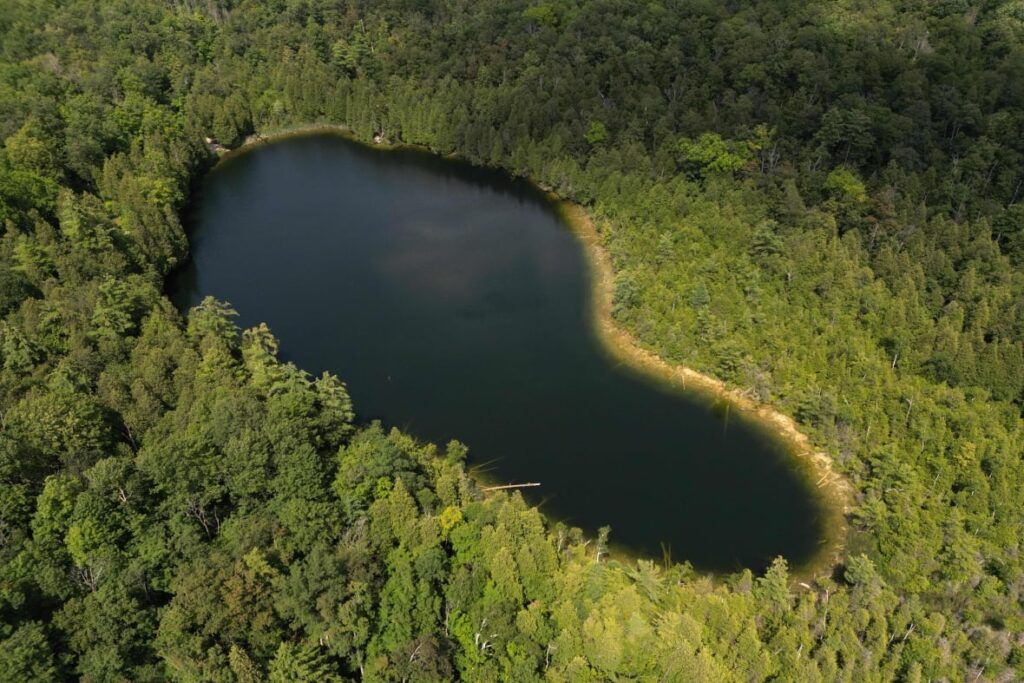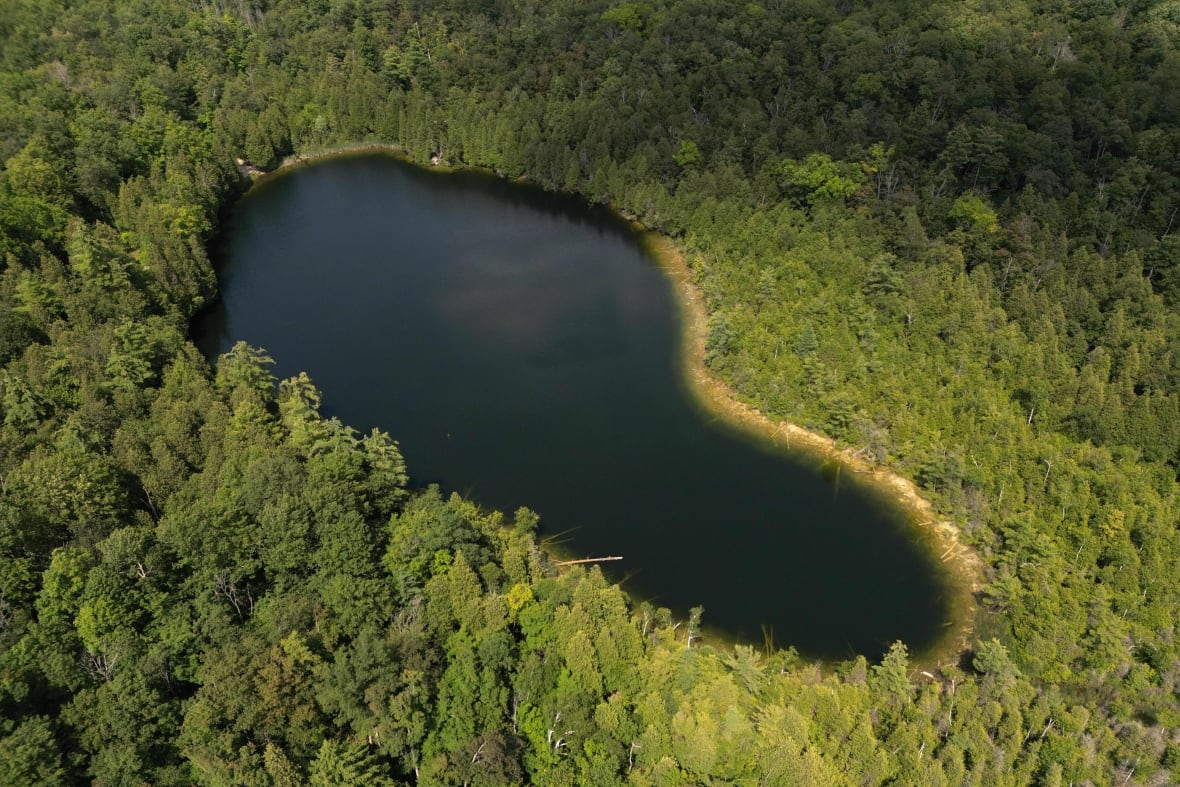
Scientists selected Crawford Lake due to the remarkable preservation of the yearly impact of human activities on the Earth’s soil, atmosphere, and biology, as evident in its sedimentary layers.
Located near the Canadian city of Toronto, Crawford Lake is a serene and visually captivating body of water known for its small size and considerable depth. However, its significance underwent a dramatic transformation when a group of scientists symbolically declared this location as the epicenter of the early Anthropocene era.
During a conference held in France, these scientists symbolically designated Crawford Lake as the starting point of a geological epoch characterized by humanity’s profound and extensive influence on the Earth. This symbolic declaration marks the commencement of an era in which human activities have had a colossal impact on the planet’s ecosystems and geological processes.
Among a selection of 11 other sites, Crawford Lake emerged as the chosen location due to its dimensions of 29 meters in depth and spanning over an area of 24,000 square meters. Its distinction lies in the exceptional preservation of the annual impacts of human activity on the Earth’s soil, atmosphere, and biology, as evident in the distinct layers of sediment it harbors.
The sedimentary composition of this lake serves as a mirror to the evolving era, encapsulating remnants associated with pollution, combustion of fuels, fertilizer application, pesticides, and more. These artifacts stand as irrefutable evidence of humanity’s profound influence, positioning us as arguably the most influential geological force on the planet.
Termed the Anthropocene era, derived from the Greek words for “human” and “new,” this epoch was estimated by scientists to have commenced sometime between 1950 and 1954. The designation recognizes the pivotal role of human activities in shaping Earth’s geological and environmental dynamics.
This comparison highlights the formidable influence of humans, placing our power in a league akin to that of the meteorite impact that occurred approximately 66 million years ago. That monumental event led to the extinction of dinosaurs and heralded the dawn of the Cenozoic Era, also known as the “age of mammals.”
Just as the meteorite’s impact shaped the course of Earth’s history, the significant imprint of human activities is reshaping the planet, emphasizing our remarkable capacity to shape the trajectory of geological epochs.



